“BELINGS THAT BELONG” – By Des Kelly
A tiny fruit that we first came to know about in Ceylon then, Sri Lanka now. Just like the “Umbrella” fruit, and tree that was quite possibly unknown in other Countries, these little fruits afforded us lots of teeth numbing pleasures that quite possibly also had us visiting our dentists sooner and much more often than the children of other climes.
I will never forget that sour, yet superb flavour, but although we never did have a Beling tree, we did have a huge Umbrella one, in our backyard, with plenty of fruits that we also enjoyed.
Especially for all my Sri Lankan/Aussie friends, our combination of Sri Lankan eLanka and Facebook friends, in fact, everybody around the World, here is a very interesting account about a fruit that is small in size but very large in flavour and taste. Just looking at the pictures in this article makes me feel as though I am eating a beling. Have one, yourself, my friends. Your face may screw up a little, but I bet you’ll enjoy it.

Desmond Kelly.
(Editor-in-Chief) eLanka.
The Flavour That Hits Your Taste Buds!
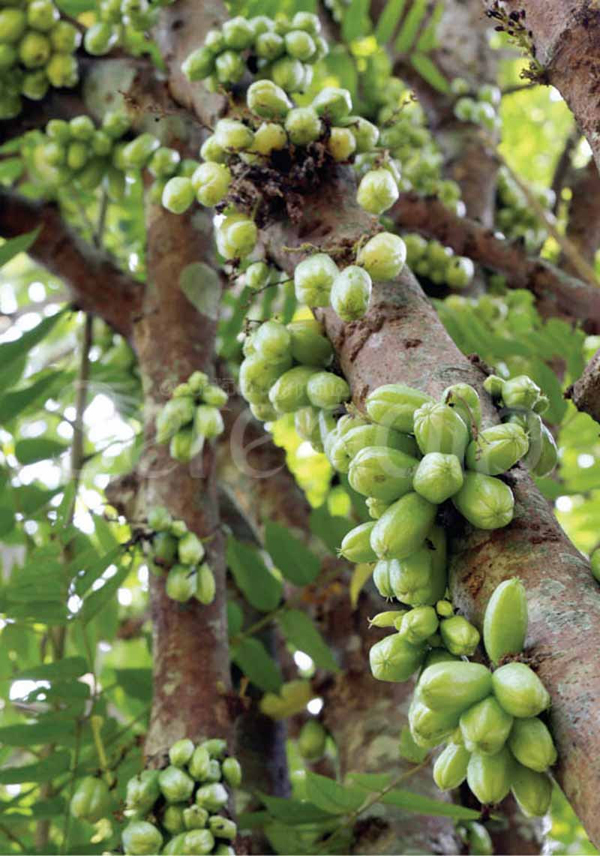
A trunk of a biling tree full of fruits outside Colombo, some ready for plucking
Words Feizal Samath Photography M. A. Pushpa Kumara
Whenever Damayanthi, from a village near Padduka, about 33 kilometres east of Colombo, can’t find tamarind, vinegar, goraka (souring fruit) or lime in her kitchen to add that tang to her family’s favourite curries, she steps onto the backyard and plucks a few biling fruits from a nearby tree.“Biling is an excellent souring agent,” she says.
Bite into the luscious flesh of a biling, and the palate tingles with a sweetness that turns sour, tangy and then acidic as the flavour hits your 
taste buds.
Like all acidic fruits, biling or Averrhoa bilimbi is available during 
all seasons. Found in most parts of 
Sri Lanka, mostly in home gardens 
and particularly in the dry zone,
the biling tree sometimes grows in the wild as well.
Diverse has been the uses of this ubiquitous fruit through the centuries, coming in handy not only in the kitchen as a souring agent, but also for medicinal purposes to ‘cut’ cholesterol. Further, the leaves of the biling tree are utilised to accelerate the healing of skin wounds and cuts.
The fruit is cylindrical with around five sides, capped by a thin, star-shaped stem. It is crisp and dark green when unripe but transforms to a bright-green to a yellowish-green when ripe and falls to the ground, if not plucked before.
The tree appears to be unattractive with long, upright branches and small leaves but the girth of the trunk is slimmer than most fruit trees such as mango or jak.
Said to have originated in Indonesia, bilimbi-as it is commonly known abroad-is found in many parts of Asia mainly the Philippines, Indonesia, Sri Lanka, Bangladesh, Myanmar and Malaysia. In India, the bilimbi is said to grow wild in the dry zone regions.
According to historians, biling or bilimbi believed to have emerged in the 18th Century in Asia, is essentially a tropical tree and is less resistance to cold. For example, the flavour of the fruit in the trees that grow in a few parts of Nuwara Eliya, the hilly central region of Sri Lanka, which can get very cold, 
is different to the dry zone variety.
While it is popular as a preservative in the preparation of different varieties of pickles, it can also be made into a pickle, on its own, as well as a syrup.
Like most acidic fruits, biling is used by ayurvedic physicians as a healing agent
In many Sri Lankan kitchens, the biling fruits are split down the middle and washed thoroughly in warm water before applying salt to take away the acidity. Thereafter, they are marinated with black curry powder, immersed in coconut milk and brought to boil, leaving to simmer for awhile, after which the tempering takes place.
This preparation, many 
Sri Lankans will vouch, is a taste-bud thriller with string-hoppers.
Like most acidic fruits, biling is used by ayurvedic physicians as a healing agent. Sudeepa Sugathadasa, a researcher into the medicinal value of plants, says that there is a belief coming down from generations that the consumption of biling is hithawath (conducive) for ailments such as ulcers and even fever. It is also considered to be a favourable food for the stomach as well.
D. C. Dhananjaya, an ayurvedic medicine practitioner says that the sourness of biling is believed to cut cholesterol and is also beneficial for those suffering from heart diseases as it acts against accumulated body fat.
Biling also fights phlegm, according to him, but should not be eaten alone as its acidity could trigger gastritis.
In the Philippines, the leaves serve as a paste on itches, swelling, rheumatism, mumps or skin eruptions. In some cases, elders believe they could cure bites of poisonous creatures. In some Indian villages the fruit of the bilimbi (biling) is used to control obesity.
biling recipes
Biling seeni sambol
Thinly slice the biling fruits and soak in salt water for a while. Drain the water and mix the sliced biling with fried chillie pieces, onion, garlic, Maldive fish, curry leaves, turmeric and raw chillie.
Heat a little oil and temper the mixture, adding two or three tablespoonfuls of thick coconut milk along with a small quantity of sugar. The dish is ready for the table after the mixture is kept over the flames for a little while longer.
Biling seeni sambol may be eaten as a side dish with rice, string-hoppers, hoppers, rotti, pittu or bread.
Biling coconut sambol
Grind chillie pieces, onion, pepper pods and Maldive fish well, adding scraped coconut to the mixture and grinding once again. Add salt to taste and mix well. Finally add the finely chopped up biling fruit.
(The quantities will vary with the number of people)
Bilimbi is also said to be used as a stain remover in the Philippines and to clean the kris knife in Malaysia.
Found in more than 20 countries under different names, perhaps the strangest name given to this fruit is in Cuba where it is called ‘grosella china’.
In a research conducted in the year 2000 in the International Journal of Ethnopharmacology, which is devoted to the development of indigenous drugs, reported on the ‘Effects of Averrhoa bilimbi (Abe) leaf extract on blood glucose and lipids in streptozotocin-diabetic rats’, which revealed some promising results.
Nihal, a chef from a southern hotel, says biling could even be used to whip-up a tangy mousse as a desert, although he hasn’t still had a go at it. His favourite dish with biling, however, is the mouth-watering achcharu (a pickle) with the ingredients of vinegar, mustard cream, black pepper, red onion, green chillie and sugar being thrown in.
For award-winning Sri Lankan chef Lloyd Opatha, one of his favourite is the ‘billing tart’ where the fruit is boiled and cooked, and then dipped into sugar syrup. “It’s a yummy dish on any day,” 
he quipped.
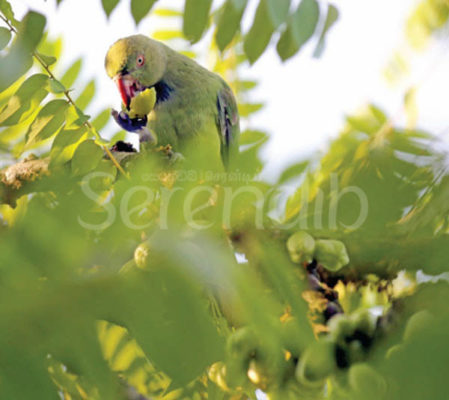
A parrot enjoys an early morning meal of biling atop one of the trees in a Sri Lankan village
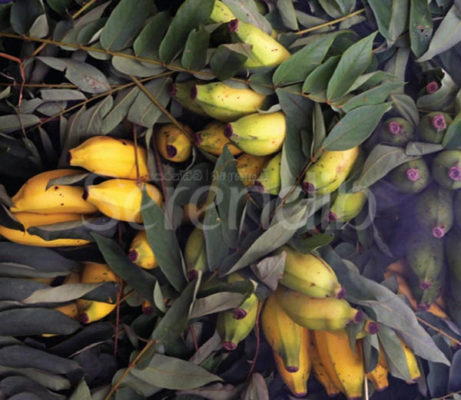
Using biling leaves for smoking as a traditional method for artificially ripening bananas at a Sri Lankan village
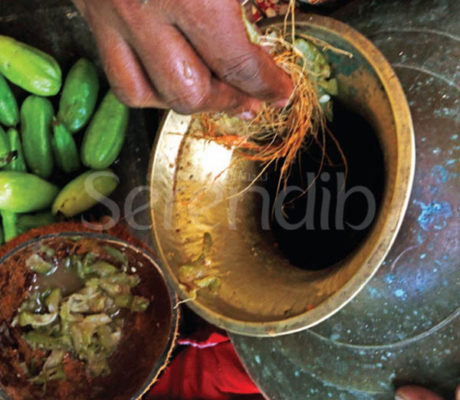
The biling fruit is also used to polish brass items as a traditional cleaner
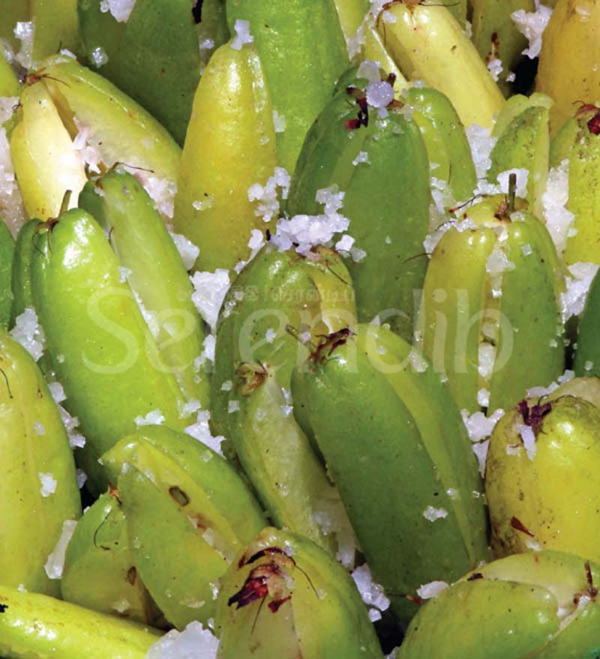
A pot of biling fruits mixed with rock salt for preserving at a home near Colombo
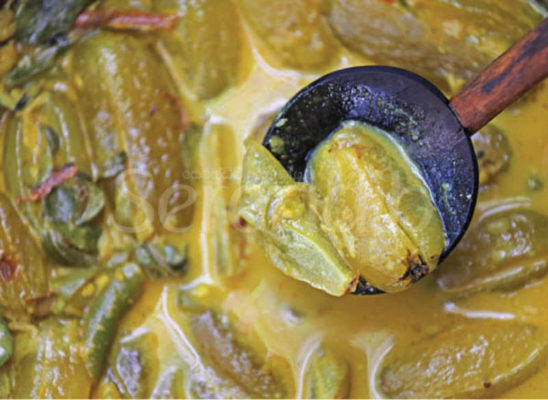
A delicacy of the local people, the biling milk curry prepared with coconut milk
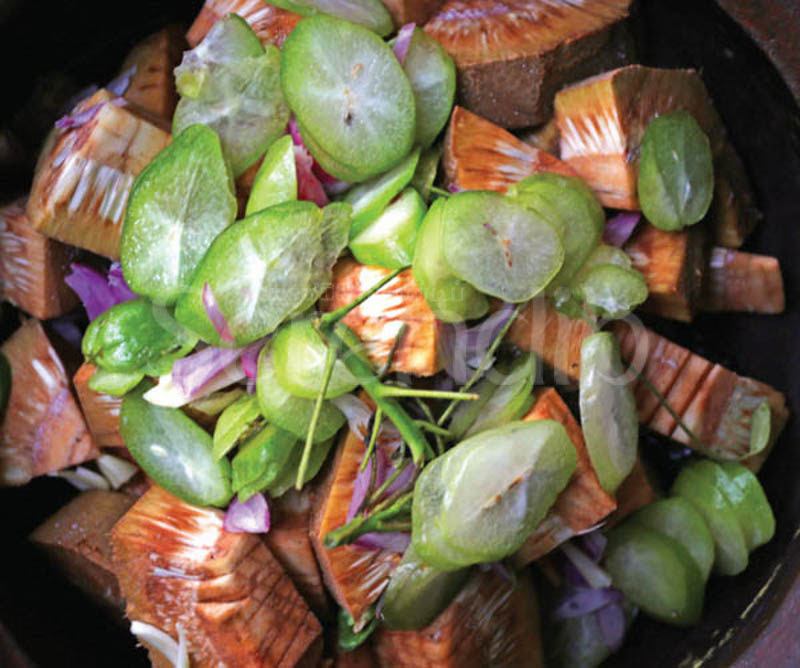
An uncooked jak fruit dish with biling fruits to add flavour to the curry, ready for cooking

A bunch of ripe
biling fruits in a tree
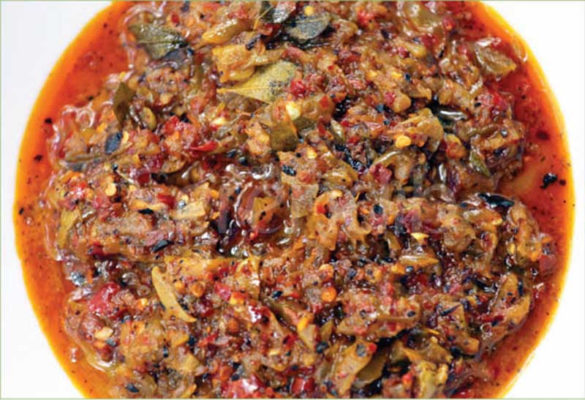
A plate of biling seeni sambol
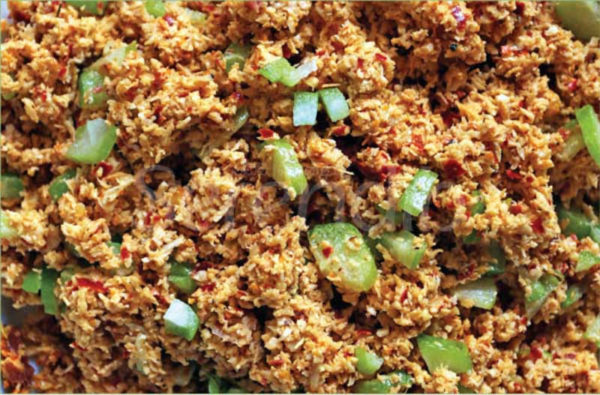
The biling coconut sambol, delicious with rice, dhal and fish curry








No Comments